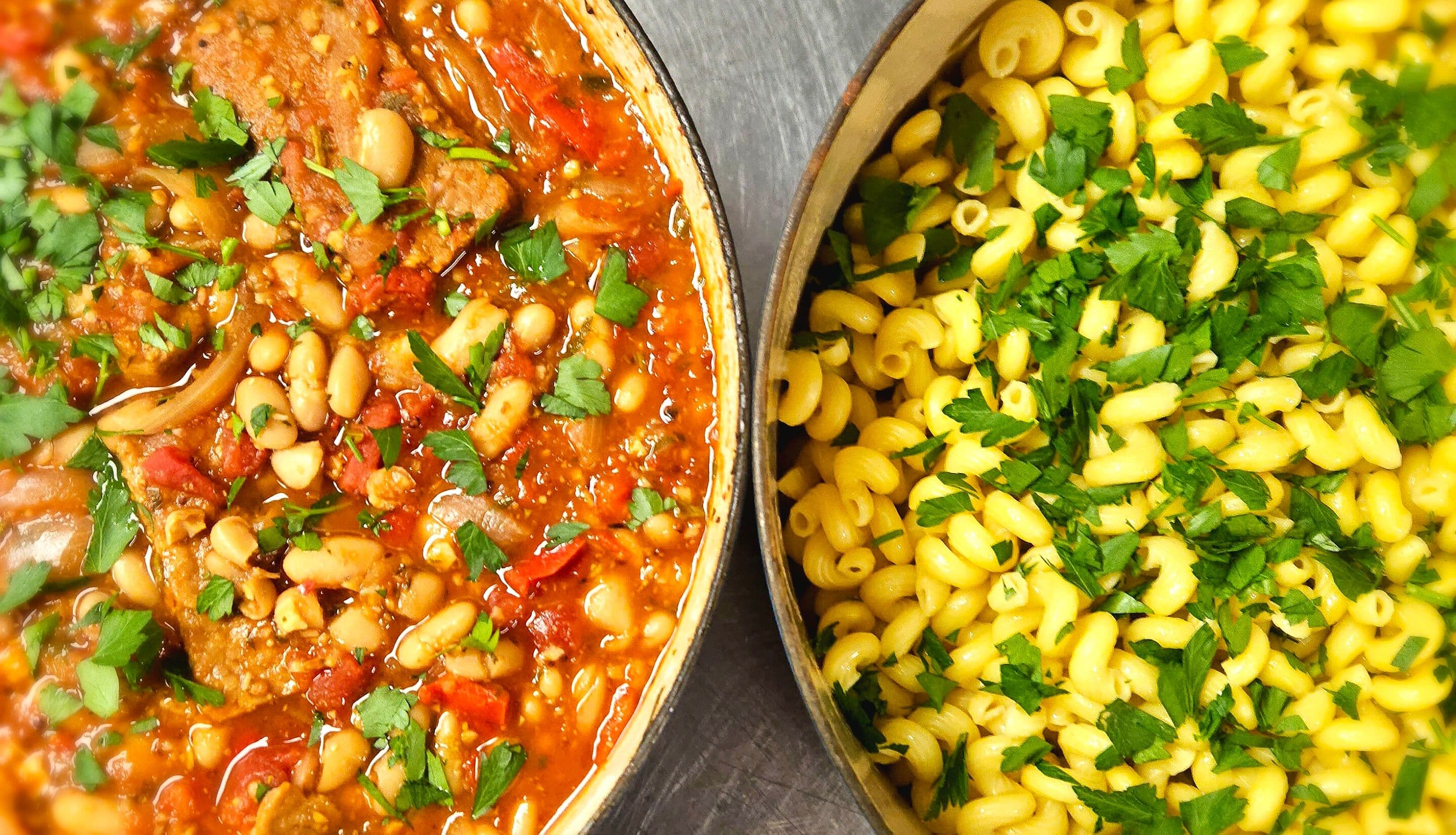Five Easy Ways to Reduce Food Waste at Home
Mike Thibault, Director of Sustainability

When we talk about sustainability, it’s often through the lens of what we’re doing at scale — how our teams are cutting food waste across corporate dining programs or how we’re reimagining supply chains with fewer carbon emissions. But Earth Month is also a great time to zoom in and discuss what happens when we apply sustainable practices closer to home.
I’ve had a few recent conversations that reminded me how small habits, done consistently, can make a big difference. A while back, I was on a call discussing food waste with a client and shared how I handle waste and storage in my own kitchen. A flood of follow-up questions highlighted a strong interest in practical, everyday sustainability tips.
Below are five easy ways to help reduce food waste at home and contribute to a healthier planet.
1. Be Strategic About Storage
A lot of food waste happens because of improper storage. Your refrigerator is a powerful tool — but to get the best results, you should consider these best practices:
Mind the Heat
Avoid putting hot items like soups or stews directly into the fridge, as this raises the internal temperature of the fridge, heating items around them and increasing bacterial growth rate, as well as increasing the risk of spoilage for other foods. Instead, cool food quickly using ice baths, or wide, shallow containers to increase surface area. Bacterial growth rates peak between 40- and 140-degrees Fahrenheit, also known as the “danger zone” for food safety, so it’s important to minimize the time foods spend in that range.
Use Your Crisper Correctly
Most refrigerators have crisper drawers with adjustable humidity settings — lower humidity for fruits, higher for vegetables. These dials might seem minor, but they can significantly extend the life of your produce.
Understand Ethylene and the Ripening Process
Some fruits (like bananas, apples and avocados) emit ethylene gas, which speeds up the ripening process. To avoid early spoilage, store ethylene-producing and ethylene-sensitive items separately. Although it can be convenient to store items together despite their ethylene sensitivity (onions and potatoes, for example), your produce will last longer and taste better if you store them the proper way.
2. Rescue and Re-purpose
One bruised apple doesn’t mean you have to throw out the whole bunch. I often sort through produce and separate out anything that’s starting to soften or showing signs of overripening. You don’t have to throw them away, as there are several ways you can re-purpose overripe fruits and vegetables.
Discoloration, soft spots or wrinkles don’t always mean the end for your food; be sure to cut around bruises or blemishes to determine what can be salvaged. By freezing a variety of softening fruit and adding it to smoothies, you can give yourself a variety of flavors throughout the year. You can also make a delicious broth from parts of vegetables that are typically thrown away like celery ends or carrot peels by simmering the veggie scraps in water for a couple of hours with your favorite herbs and seasonings. Also familiarize yourself with which produce should be kept in the fridge versus stored at room temperature to keep your food at its freshest.
By rescuing certain items from the trash and exploring new ways to extract flavor, you can reduce waste while also expanding your culinary knowledge and skills.
3. Compost What You Don’t Use
Even with the best planning, some waste is inevitable. Composting is one of the easiest and most effective ways to keep uneaten food out of landfills. Many cities offer compost pickup programs, and a wide range of compost bins or other devices that turn food waste into soil amendments are available to consumers. Composting does more than just reduce food waste — it also improves the health of soil, reduces the need for chemical fertilizers and combats climate change by keeping organic material out of landfills.
When food scraps and other organic materials are used to build nutrient content in soil, it strengthens local food production and sustainability. Compost also helps soil sequester carbon and absorb water, reducing the effects of drought, as well as contributing to the regeneration of soil health depleted by overuse.
If you’ve got an interest in creating or expanding a composting program in your area, the Environmental Protection Agency provides resources and information for those looking for a way to get started. Composting not only offers countless benefits, but also allows you to get involved with and improve your local community.
4. Think Before You Toss
We’re all familiar with checking expiration dates, but the way they’re presented isn’t always clear. A portion of food waste stems from consumer misunderstanding of labels, and phrases like “sell by” or “best by” can add to the confusion. A survey of U.S. adults in January 2025 found that consumer confusion around food date labels has grown, with 43% reporting they “always or usually” discard food near or past the date on the label. If you see “best by” on a product, it refers to the food’s quality — although it may not taste as good after this date, it’s still safe to consume.
“Sell by” dates tell stores how long to display their products, and “use by” dates on perishable items like meat and eggs indicate peak quality, not necessarily when they’ll spoil. Although some foods may be safe to eat past their printed date, don’t risk eating anything that smells off or looks slimy.
To help you throw away less food, label and date your leftovers and try to practice a “first in, first out” (or FIFO) approach when organizing your fridge and pantry.
5. Share With Your Four-Legged Friends
This might not be for everyone, but we use safe produce scraps to make things like dog-friendly broth and frozen treats. If you plan to share with a furry friend, be sure to check with your vet first and take advantage of reputable sources like American Kennel Club or The International Cat Association to confirm which fruits and vegetables are safe for your pets.
For example, I’ll make a batch of vegetable broth (without onions or garlic), freeze it in ice cube trays and use it as a summer treat for our dogs. It’s a great way to extend the lifespan of your ingredients while keeping your animal friends happy in the process.
At Guckenheimer, we’ve made serious strides in food waste reduction. But putting sustainability at the forefront works just as well at the local and individual level as it does for organizations. By wasting less and being more mindful in the kitchen, we can all make a positive impact on both our community and the planet.


